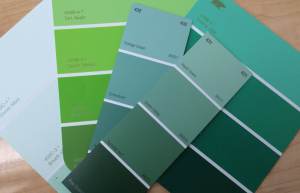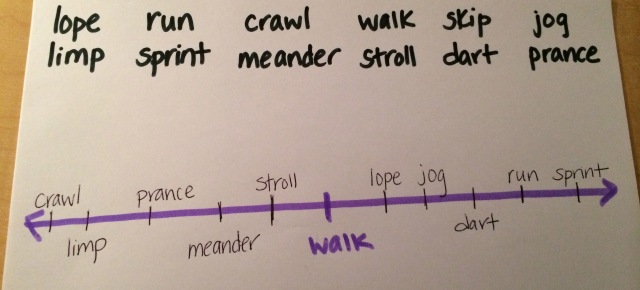 Every literacy teacher thinks about ways to teach word choice. From mentor texts to word study, teachers search for ways to help their students become “word choosy.” This is because we want our students to choose their words with purpose. We want them to think about nuance and connotation. We want them to consider how words are slightly different from each other. For example, what makes the word lope different from bound.
Every literacy teacher thinks about ways to teach word choice. From mentor texts to word study, teachers search for ways to help their students become “word choosy.” This is because we want our students to choose their words with purpose. We want them to think about nuance and connotation. We want them to consider how words are slightly different from each other. For example, what makes the word lope different from bound.
I have LOVED reading Word Savvy by M. Brand; Words, Words, Words by J. Allen; and Bringing Words to Life by Beck, McKeown, and Kucan. I’ve looked for ways to strengthen my vocabulary instruction, and these resources have been invaluable. In addition, my go-to word sort activities come from the Words Their Way series.
However, it was an article I read in 2007 from The Reading Teacher journal, called “Overlapping Vocabulary and Comprehension: Context Clues Complement Semantic Gradients” by Greenwood & Flanigan, that changed the way I teach word choice. This article taught me how to use word gradients in the classroom. Word Gradients, also referred to as Word Spectrums, are like word number lines. They are one way to sort, categorize, and organize words so students can see the nuances between the words in order to be “word choosy.”
The purpose of this vocabulary strategy is NOT to teach synonyms but to teach the small nuances between words. In order to use this vocabulary strategy, choose a category of words. This category might be: “Movement Words” (i.e. crawl, walk, sprint); “Speaking Words” (i.e. whisper, shout, yell); “Red Color Words” (i.e. crimson, rose, garnet); “Names of Birds” (sparrow, humming bird, owl.) See the list below of Word Gradient categories I’ve used.

Create (or have your students create) words in these categories. Next, have your students sort these words- see example below. Discuss and debate the nuances between words that are very close in meaning. These “shades of meaning” are important, and students should discuss when they would use certain words versus others.
Generating these gradients helps students see the differences between words, and it also allows them to see how many words we have in the English language that they can choose from. Encouraging students to be “Word Choosy” helps students be as specific and purposeful as possible in their writing.
 Some people have asked me, “How do your students sort color words? Or types of bread?” For color words, we sort by lightest shade to darkest (using paint chips helps!) For bread, we sort by smallest to largest, or by time of day when you might eat that bread, or by importance (common, everyday bread vs. special occasions.)
Some people have asked me, “How do your students sort color words? Or types of bread?” For color words, we sort by lightest shade to darkest (using paint chips helps!) For bread, we sort by smallest to largest, or by time of day when you might eat that bread, or by importance (common, everyday bread vs. special occasions.)
Categories of Words: Movement Words; Speaking Words; Words for Large/Small; Quick/Slow; Strong/Weak; Ugly/Beautiful; Scared/Brave; Kind/Mean; Color Words; Words for flying, falling, jumping, etc.; Types of Bread; Chocolate; Candy; Shirts/Pants; Shoes; Desserts; Vegetables; Transportation; Fruits; Seafood; Trees; Small & Large animals; Flowers. Of course, within each category, you can find sub categories. For example, you could spend weeks just sorting flowers–> Flowers you’d find in someone’s garden, large/small flowers; wild flowers, flowers at the grocery store, flowers on trees, flowers of a certain color, flowers that are symbolic, etc.
Enjoy! Have fun being “word choosy!”


Word gradients are new to me, but I LOVE the idea! I can’t wait to try this out for my own writing.
LikeLike
Thanks, Stacey! I love using them with my students. It’s fun and my 5’s love thinking about new words. Thanks for the comment!
LikeLike